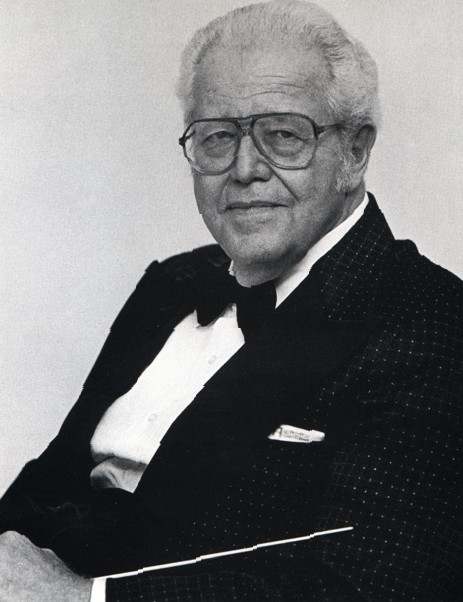 Alfred Reed
Alfred Reed(January 25, 1921 – September 17, 2005)
There isn't much to be said about Alfred Reed. He was a normal guy, native of New York, was just pretty chill all round. Wasn't weird, etc. He composed a buttload of pieces though, over 200 pieces for concert band, wind ensemble, orchestra, chorus, and chamber ensemble.
Featured in this post is Reed's Armenian Dances (Part I) written in 1972 based off of Armenian folk songs collected by Komitas Vardapet (1869 - 1935), who was an Armenian (obviously) who apparently lost his mind after witnessing the 1915 Armenian Genocide.
From Wikipedia, because I'm getting lazy:
Armenian Dances (Part I) was completed in the summer of 1972 and first performed by the University of Illinois Symphonic Band on January 10, 1973. The piece is dedicated to Dr. Harry Begian, the director of that ensemble. The work includes five distinct sections:
- Tzirani Tzar (The Apricot Tree) (mm. 1–29), which opens the piece, begins with a short brass fanfare and runs in the woodwinds. This sentimental song consists of three related melodies.
- Gakavi Yerk (The Partridge's Song) (mm. 30–68), an original composition by Vardapet, has a simple melody which is first stated in the woodwinds and then repeated by the brass. Its simple, delicate melody was intended for a children’s choir and is symbolic of that bird’s tiny steps.
- Hoy, Nazan Eem (Hoy, My Nazan) (mm. 69–185) is a lively dance, mostly in 5/8 time, which naturally imposes an unusual pattern of additive meter. In this song, a young man sings the praises of his beloved, named Nazan.
- Alagyaz (mm. 186–223), a folk song named for a mountain in Armenia, is a broad and majestic song; it serves as a contrast to the fast, upbeat songs that come both before and after.
- Gna, Gna (Go, Go) (mm. 224–422) is a delightful and humorous laughing-song in 2/4 time; it builds in volume and speed until the exciting conclusion of the piece.
Unfortunately, the version I found on youtube that I like is broken up into two videos in an odd place in the piece. The rest of the recordings either are bad quality, or I don't like the way that the ensemble handles the end of the piece.
No comments:
Post a Comment